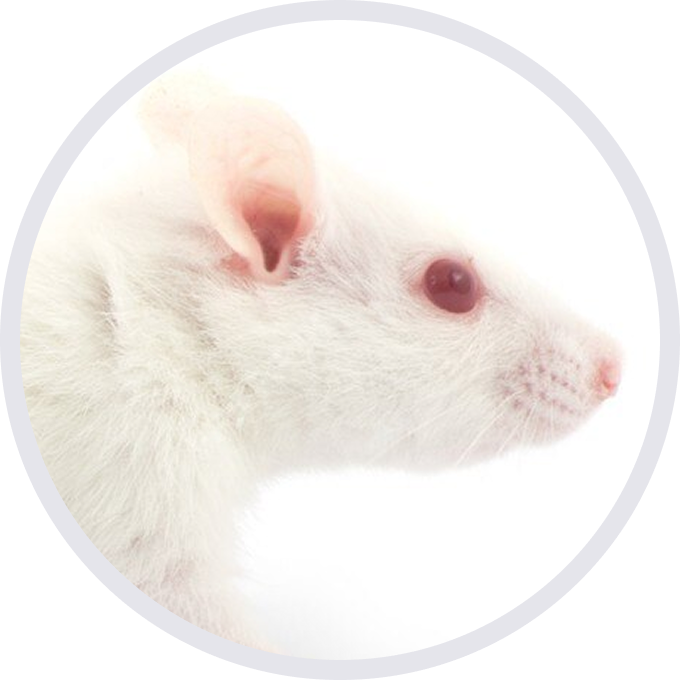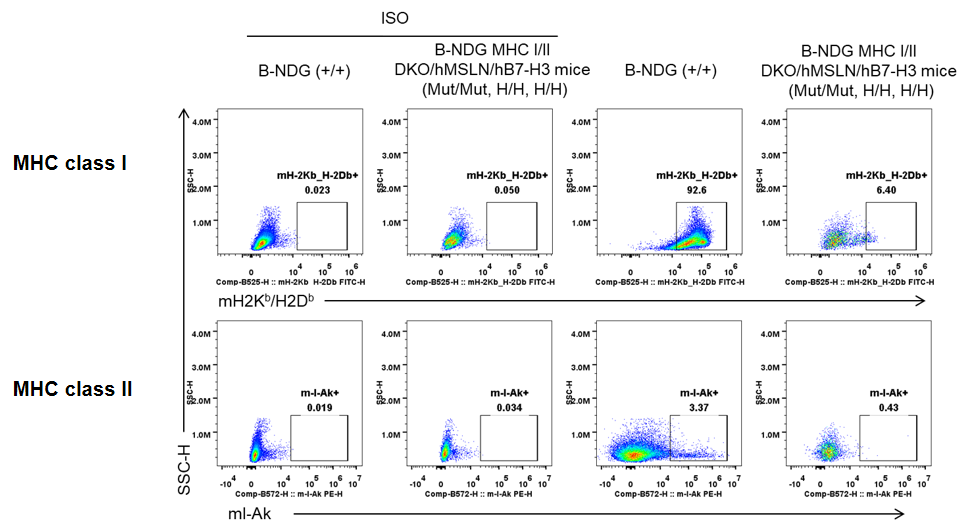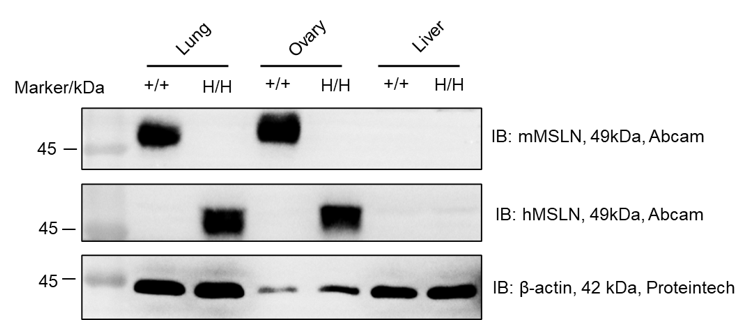


NOD.CB17-PrkdcscidIl2rgtm1BcgenH2-K1tm1BcgenH2-D1tm1BcgenH2-Abtm1BcgenMslntm1(MSLN)BcgenCd276tm1(CD276)Bcgen/Bcgen • 114084
| Product name | B-NDG MHC I/II DKO/hMSLN/hB7-H3 mice |
|---|---|
| Catalog number | 114084 |
| Strain name | NOD.CB17-PrkdcscidIl2rgtm1BcgenH2-K1tm1BcgenH2-D1tm1BcgenH2-Abtm1BcgenMslntm1(MSLN)BcgenCd276tm1(CD276)Bcgen/Bcgen |
| Strain background | B-NDG |
| Aliases | NA; MPF, SMRP; B7H3, B7-H3, B7RP-2, 4Ig-B7-H3 |
Gene targeting strategy for B-NDG MHC I/II DKO/hMSLN/hB7-H3 mice.
The murineB2mandH2-Ab1gene were knocked out while a fused gene composed of murineB2mandFcgrtgene was inserted after the signal peptide sequence of murineFcgrtgene in B-NDG MHC I/II DKO/hMSLN/hB7-H3 mice.
Exons 11-17 of the mouseMslngene that encode the full-length protein were replaced by humanMSLNexons 11-18 of the B-NDG MHC I/II DKO/hMSLN/hB7-H3 mice. The promoter, 5’ UTR and 3’UTR region of the mouse gene are retained. The human MSLN expression is driven by endogenous mouseMslnpromoter, while mouse Msln gene transcription and translation will be disrupted.
The exons 3~4 of mouseCd276gene that encode the extracellular domain were replaced by humanCD276exons 3~6 in B-NDG MHC I/II DKO/hMSLN/hB7-H3 mice. The promoter, 5’ UTR and 3’UTR region of the mouse gene are retained. The human CD276 expression is driven by endogenous mouseCd276promoter, while mouseCd276gene transcription and translation will be disrupted.

Strain specific MHC I/II expression analysis in wild-type B-NDG mice and homozygous B-NDG MHC I/II DKO/hMSLN/hB7-H3 mice by flow cytometry.Splenocytes were collected from wild-type B-NDG mice (+/+) and homozygous B-NDG MHC I/II DKO/hMSLN/hB7-H3 mice (Mut/Mut, H/H, H/H). Protein expression was analyzed with MHC I antibody (Biolegend, 114613) and MHC II antibody (Biolegend, 109908) by flow cytometry. MHC I and II were only detectable in wild-type B-NDG mice, but not in homozygous B-NDG MHC I/II DKO/hMSLN/hB7-H3 mice.

Western blot analysis of MSLN protein expression in homozygous B-NDG MHC I/II DKO/hMSLN/hB7-H3 mice. Various tissue lysates were collected from wild-type B-NDG mice (+/+) and homozygous B-NDG MHC I/II DKO/hMSLN/hB7-H3 mice (Mut/Mut, H/H, H/H), and then analyzed by western blot with anti-mMSLN antibody (Abcam, ab187063) and anti-hMSLN antibody (Abcam, ab93620). 40 μg total proteins were loaded for western blotting analysis. mMSLN was detected in lung and ovary in wild-type mice, hMSLN was detected in lung and ovary in homozygous B-NDG MHC I/II DKO/hMSLN/hB7-H3 mice.